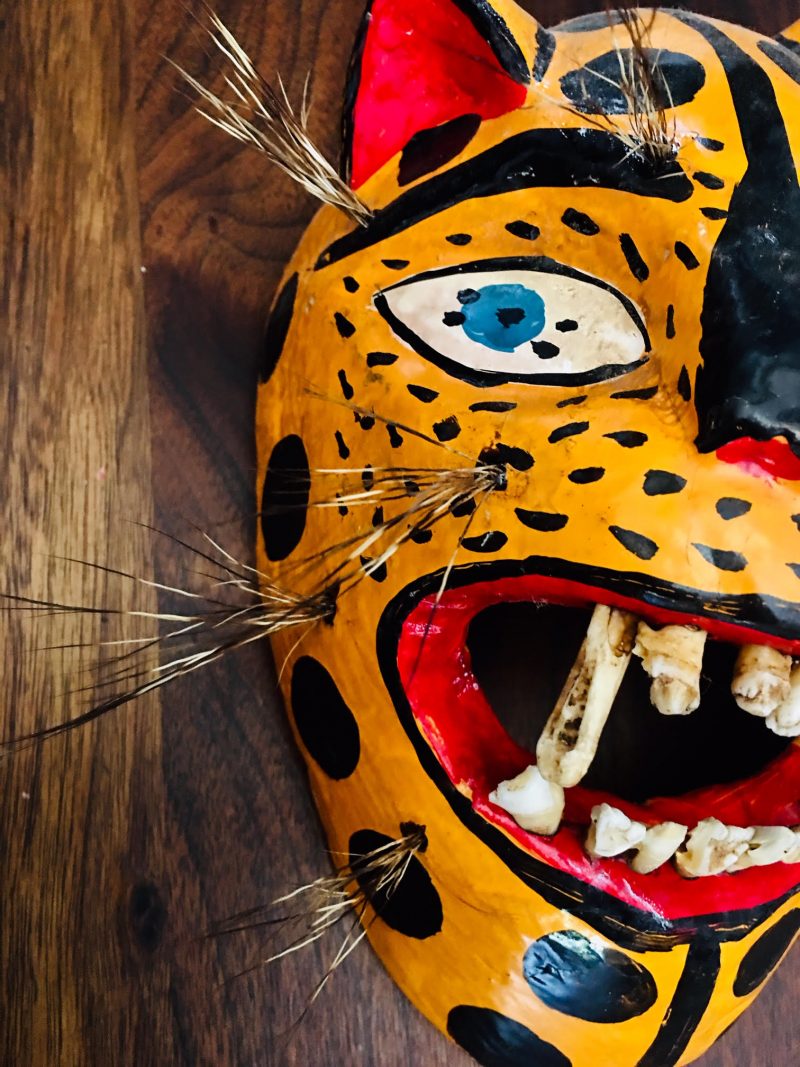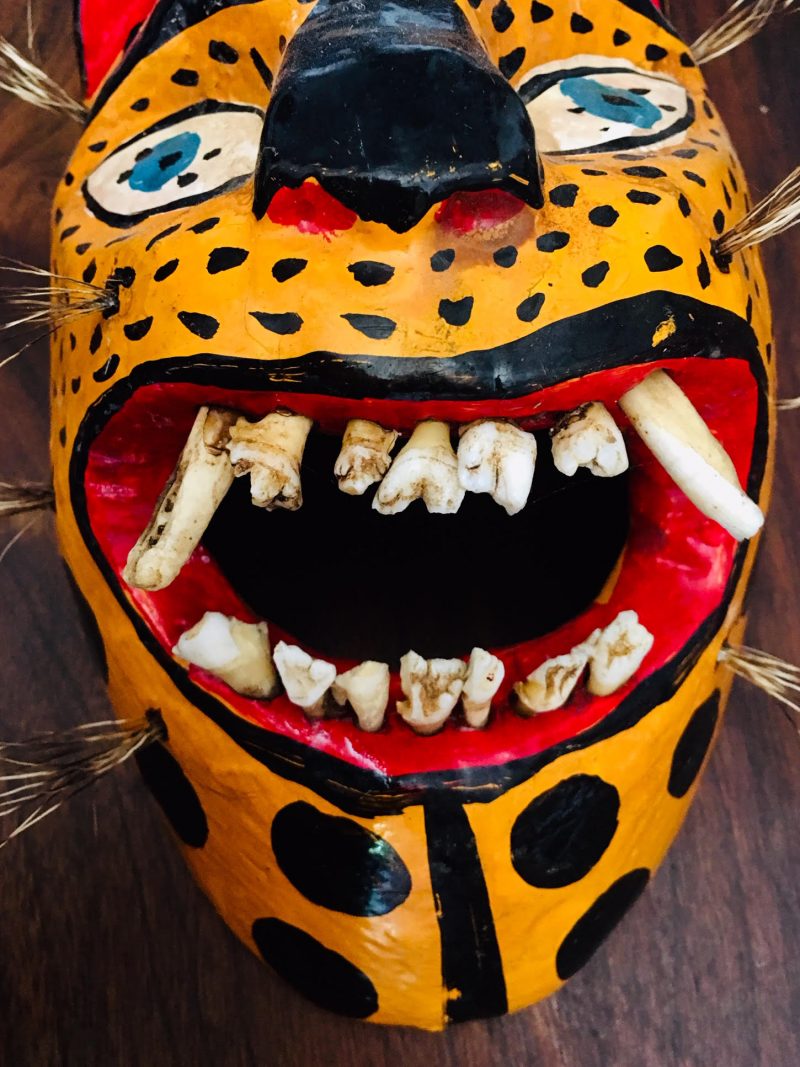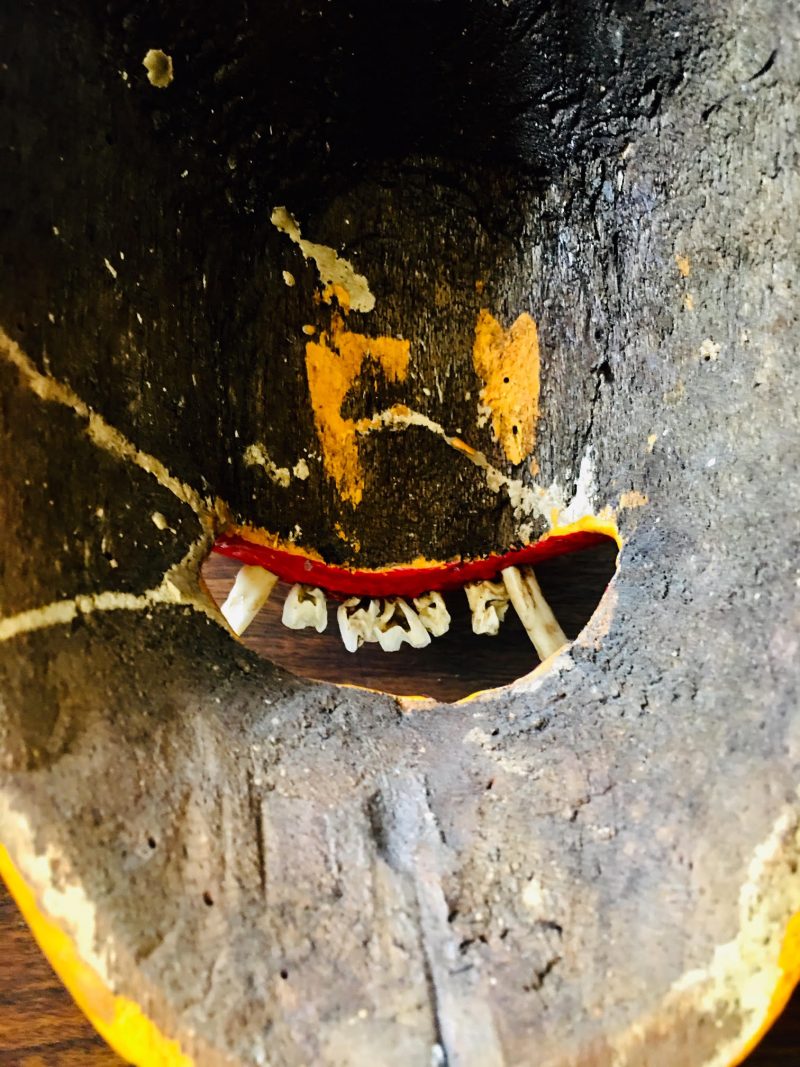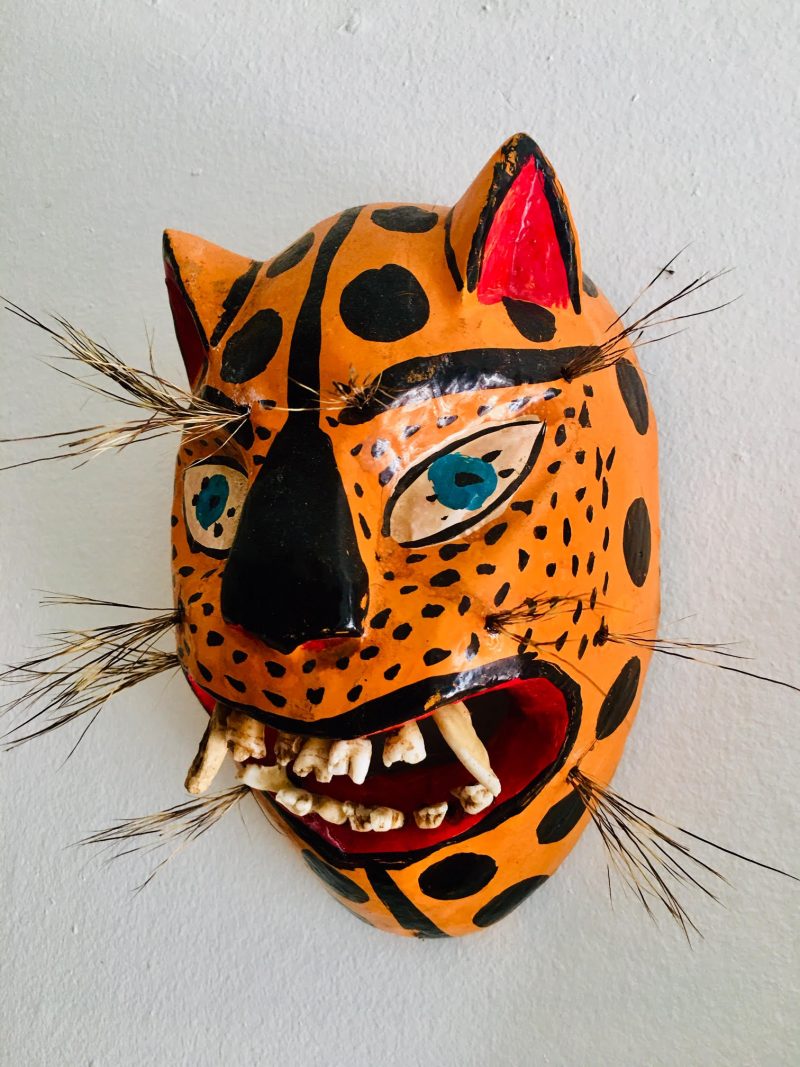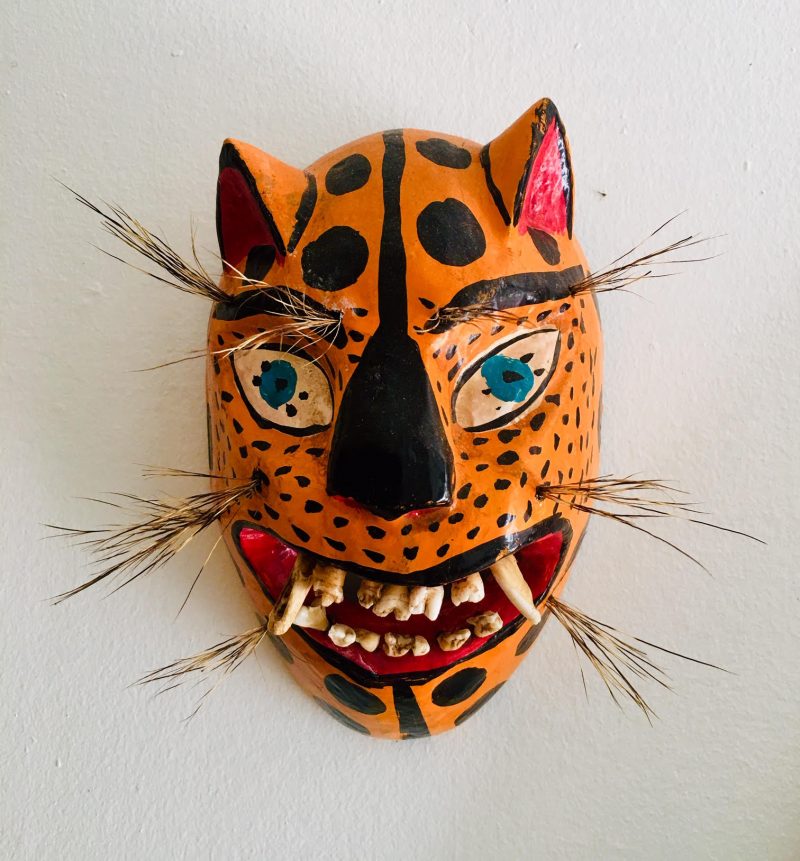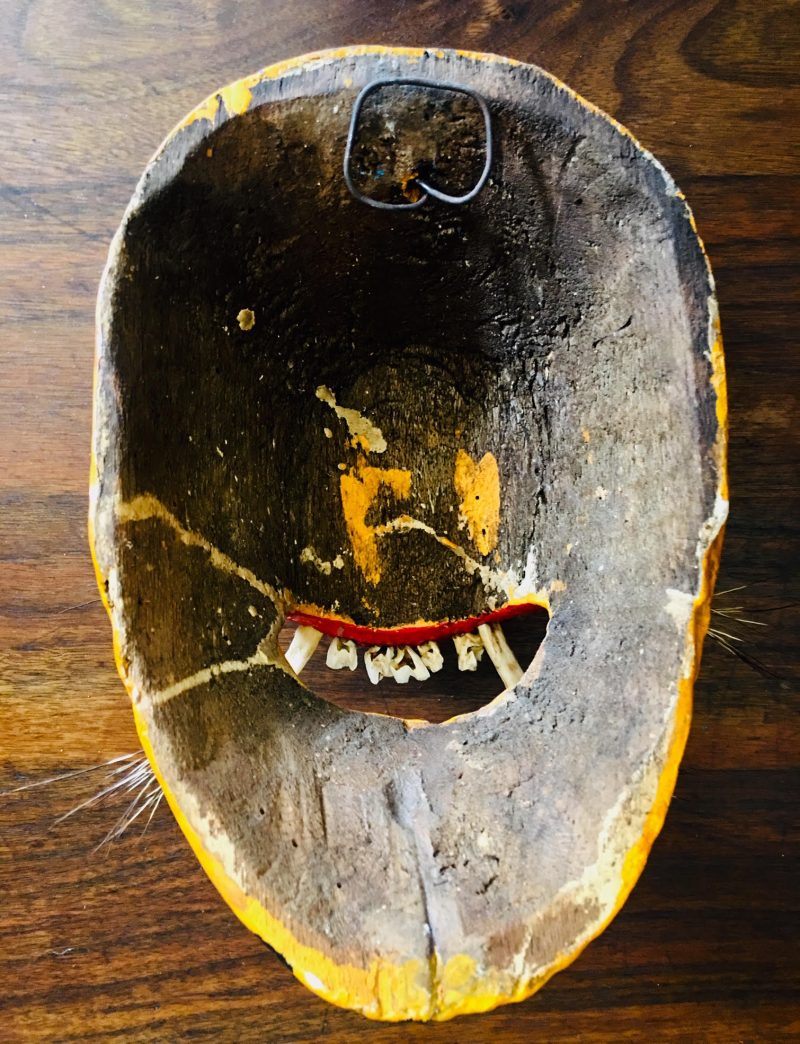SOLD. Mexican Folk Art Leopard Wood Mask with Teeth
Authentic Vintage Mexican Jaguar Wood Mask. Purchased in vintage shop in Puerto Vallarta, Mexico. Hand carved by local artisan in unknown period. Estimated at 15 years old. Measures 9 inches height x 6 inches width x 4.74 inches depth. Detailed with authentic porcupines hairs/soft quills and real boars teeth/tusks. These masks can be used in dances where hunters are hunting the Jaguar or to maintain the balance of the natural world.
Valued at USD$225.
SOLD.
Mexican mask-folk art refers to the making and use of masks for various traditional dances and ceremony in Mexico. Evidence of mask making in the country extends for thousands of years and was a well-established part of ritual life in Mexico when the Spanish arrived. In the early colonial period, evangelists took advantage of native customs of dance and mask to teach the Catholic faith although later, colonial authorities tried to ban both unsuccessfully. After Independence, mask and dance traditions showed a syncretism and mask traditions have continued to evolve into new forms, depicting Mexico’s history and newer forms of popular culture such as lucha libre. Most traditional masks are made of wood, with others made from leather, wax, cardboard, paper mache and other materials. Common depictions in masks include Europeans (Spanish, French, hacienda owners, etc.), Afro-Mexicans, old men and women, animals, and the fantastic/supernatural, especially demons/the Devil.
MORE:
THE JAGUAR
In this dance the masks are essential: one of the main dancers that represents precisely the image of the jaguar, wears a wooden or leather mask and a suit that covers the entire body and simulates the mottled skin of the animal. Another of the fundamental characters in the dance is the creeper or tracker, the hunter in charge of catching the jaguar and submitting it, always accompanied and helped by the Wonder Dog that, as the name implies, is the dog that sniffs the tracks of the persecuted jaguar.
As Alejandro Ortiz has pointed out, the tiger spots of the dance refer not only to his feline features but also to the mythical jaguar that was thrown into the fire in Teotihuacán to create the new sun and give movement to the universe. The spots on his skin would be the remains of the ashes of the primal fire so that the jaguar would symbolize, in the mythical plane, a cosmic force related to the creative and nocturnal forces. In many Mesoamerican cultures of pre-Hispanic times, the jaguar was also linked to power, to the ruling lineages and to priests, not only because of the aforementioned mythical-religious sense of the feline but also because of the animal’s own strength and majestic presence. The jaguar is also, in the Mesoamerican world, a totemic force that, in certain rites, must be defeated for the world to continue.
On the other hand, the jaguar was and is associated – in numerous Mesoamerican cultures – not only with power and night but with the aquatic world and the rain gods.
THE MEANING OF THIS DANCE
All these mythical-religious elements are present in the dance of Tecuanes or Tlacololeros: the dance represents everyday aspects of the planting of tlacolol, the cultivated land of corn, a basic element in the Mesoamerican diet.
